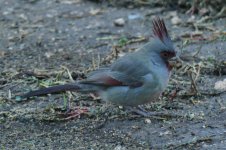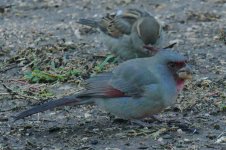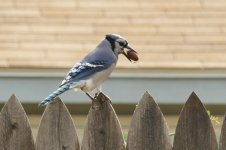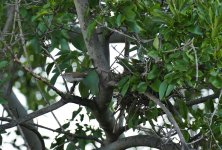There's gotta be a quick fix....:-O :-O :-O :-O
I'm at that point where I could use some help.
I'd appreciate it if you would take a look at these shots and tell me how to take a sharper photo. I would like more definition to the feathers.
I've had my FZ1000 3 weeks, I knew nothing about DSLRs or photography prior to this purchase. I think I'm at the point where I can take constructive criticism and apply it fairly quick, although on a learning curve.
The Pyrrhu(s) photos were taken through a window 1/2 hour after sunrise, the BlueJay was taken in the afternoon under a partly cloudy sky shortly after a rain.
On the Pyrrhuloxia:
Shutter Priority, F4.5(F4 2nd one) 100 -.7 Exposure 800 ISO 719mm
On the Blue Jay:
Shutter Priority, F8, 100, 0 Exposure, 125 ISO, 619mm
I appreciate you guys, thank you so much.
Bill
I'm at that point where I could use some help.
I'd appreciate it if you would take a look at these shots and tell me how to take a sharper photo. I would like more definition to the feathers.
I've had my FZ1000 3 weeks, I knew nothing about DSLRs or photography prior to this purchase. I think I'm at the point where I can take constructive criticism and apply it fairly quick, although on a learning curve.
The Pyrrhu(s) photos were taken through a window 1/2 hour after sunrise, the BlueJay was taken in the afternoon under a partly cloudy sky shortly after a rain.
On the Pyrrhuloxia:
Shutter Priority, F4.5(F4 2nd one) 100 -.7 Exposure 800 ISO 719mm
On the Blue Jay:
Shutter Priority, F8, 100, 0 Exposure, 125 ISO, 619mm
I appreciate you guys, thank you so much.
Bill







